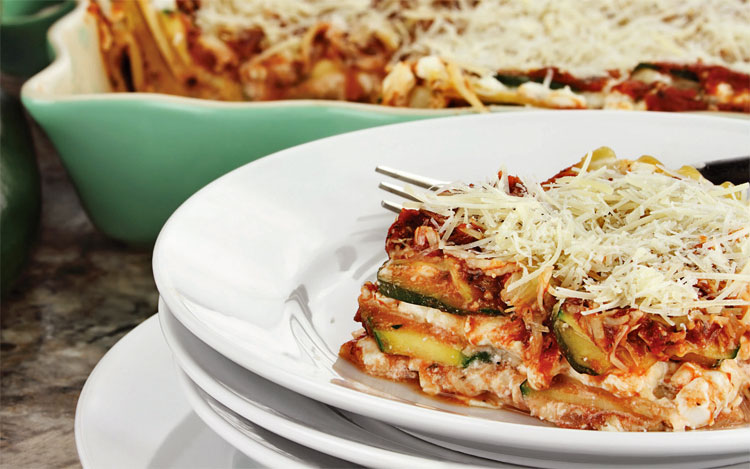EASTER IS A TIME of rejoicing for Christians all over the world. It’s a time for rebirth and starting over. It’s spring for everyone, no matter what religion. And, it’s a time to take a fresh look at what we eat.
Lent, traditionally 40 days of culinary sacrifice, leads to Easter. When I was a boy, Lent meant no meat on Friday, fish for everyone who could afford it, and skimping on meals other days. That’s not a bad way to eat all the time for everyone — more fish, less red meat, and light meals.
Easter wouldn’t be the same without eggs — the ultimate symbol of birth. And eggs are a fine thing to eat all year. One large egg has 72 calories and 6 grams of protein. Half the protein is in the white, and the fat, almost 5 grams, is in the yolk.
Two eggs and leftover vegetables make a nutritious meal. Simply scramble the eggs, add a pinch of salt and pepper if you like, and your favorite herbs, then pour them over the vegetables heated in a frying pan.
Leftover pasta can get the same treatment. Add a little grated parmesan cheese for more interest. Prepare two slices of lightly buttered, grainy bread, and dinner is served.
Since the fat is in the yolk, you can boost protein by adding an extra egg white to the mixture. Give the yolk to the dog.
Nothing says quick and inexpensive like ramen noodles. Pour a scrambled egg over the noodles for extra protein to help balance the carbohydrates. And some grated parmesan or Romano. Everything’s better with grated sharp cheese on top.
If you have colored eggs left after Easter, you have egg salad for lunch. Chopped black olives or pickle relish add snap to plain old egg salad. To reduce calories, add shredded or chopped lettuce to the eggs.
Ham is the traditional Easter meat in many homes. It’s lean — 138 calories in four ounces of ham steak — compared to 286 calories in the same amount of lean beef steak. Ham is high in sodium, though, so check the label of the one you buy. Some consider the ham bone to be the best part of the Easter specialty — not because you eat it, but because of the soup or greens that come after the meat is gone. Don’t give the bone to the dog. It has far too much salt, and cooked bones can splinter.
Back to the Easter bunny for a bit — rabbit food is healthy for humans, too. A diet high in vegetables doesn’t add anything to the cholesterol total that doctors like to point out when they waggle their index figure at you and then get out the prescription pad.
Just for fun, look at a lasagna recipe: meat, tomatoes, pasta, and cheese. Now look at it without the meat: Tomatoes, pasta and cheese. Full-fat cheese has more cholesterol and fat than you might like so delve a little deeper in the cheese aisle for low fat varieties. Skim milk ricotta and low-fat mozzarella work well. And the stronger the cheese, the less you need— try Romano or asiago instead of fontina or parmesan. Now, look in your vegetable crisper. Carrots — check. Peppers — check. Zucchini — check. (Cook some of the water out of the zucchini so it doesn’t make the dish watery.) Remember the Easter eggs? Slices of cooked egg help replace some of the protein from the now-absent meat. Canned beans do the same thing, and you will be surprised at the flavor that comes from a handful of walnuts in the layers.
For a quick everyday pasta dinner, heat jarred sauce with cooked vegetables and cannellini beans and pour that over your favorite cooked pasta shape. Sprinkle with a grated, strong cheese. Dip your whole grain bread in olive oil with Italian herbs instead of slathering on the butter.
Shepherd’s Pie is a favorite in many homes and it can be a lean planned-over meal.
Make twice the amount of mashed potatoes as you normally do, skimping on the butter and using skim milk or chicken stock. The extra half goes on the pie. Double the carrots too. Cook a package of peas or your favorite mixed vegetables. Or, use leftover vegetables. Put the vegetables (not the potatoes) in a deep casserole and add two cans of lentils, drained, half a can or jar of gravy, and mix well. Add favorite herbs or seasonings to taste. Bring to a simmer on top of the stove and cook until everything is piping hot.
Spread the mashed potatoes on the vegetables, swirling to form peaks. Bake at 350 degrees Fahrenheit until the potatoes start to brown and the filling is bubbling. A little Romano cheese or sharp Cheddar can decorate the top. No one will realize that there is no meat and very little fat.
Fruit-based desserts are healthy and easy. To make a dump cake spread two or three pie fillings in a pan. Sprinkle a dry cake mix over top. Dot with a little butter and sprinkle with nuts. Bake at 350 degrees Fahrenheit for one hour.
Happy and healthy Spring.
CREDIT
article by TRENT ROWE, CFHN Food Editor
